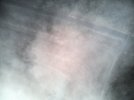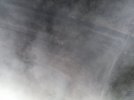Hello,
I've got a DJI Mini 2, and I've been using it for hobbyist photogrammetry, mapping, and other things.
If you know anything about drone photogrammetry, you'll know that it's very sensitive to lighting conditions-- if it's a patchy-clouded and windy day, you're going to have problems due to the changing brightness and contrast of objects from photo to photo. That's going to confuse the heck out of the photogrammetry engine-- and even if it doesn't, the textures will look patchy and vary in brightness.
For the previous photogrammetry projects I've done, I've just used the JPGs that the onboard image processing generates-- but I can tell that they're not the best for photogrammetry. I know that I should be using the DNGs and processing them into PNGs.
But here's the issue:
This is an example image from a previous project. I was shooting in JPG+DNG mode, and this first image is the JPG as seen in Windows Photos:
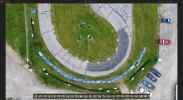
Looks perfectly normal to me, except it's in a form where I can't control the processing of the photo in the way that I would like.
Next, here's a screenshot of the DNG version of that photo in Darktable:
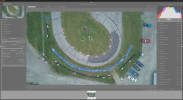
This is exactly how it comes in by default, I haven't changed any settings. It looks terrible, but most of that can be corrected-- it is a DNG after all, you're expected to do post processing manually. However, there's one issue here that Darktable (and RawTherapee, I tried it as well) isn't correcting for-- sensor color cast. If you look closely at the color of the image in Darktable, you can see that the center of the image has a pink cast, and the outside of the image has a green cast. There's also another separate issue, and that's lens distortion-- but that's not an issue for me, as my chosen photogrammetry engine can sense and correct that automatically. But the color cast? It's going to get hung up on that, and even if it doesn't, the generated textures will have large pink spots all over them.
Now, let's look at Adobe Lightroom (Classic):
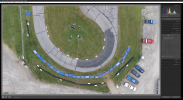
Again, this is exactly how it comes in by default, no processing applied-- but clearly, as indicated by the "Built-in Lens Profile applied" message on the right, Lightroom is using some sort of lens profile from either the image itself or Adobe's servers to correct both the lens distortion and, as it appears, the color cast as well!
Why can't Darktable and RawTherapee do this color cast correction?
Is there some sort of lens profile with color cast correction I can download that works with Darktable and/or RawTherapee?
I know this color cast on the DJI FC7303 sensor is a known issue, but DJI have "fixed" it by either embedding a correction profile in the images that only Lightroom can use, or giving Adobe a correction profile that only Lightroom can access.
WTH???
... or am I missing something?
I've got a DJI Mini 2, and I've been using it for hobbyist photogrammetry, mapping, and other things.
If you know anything about drone photogrammetry, you'll know that it's very sensitive to lighting conditions-- if it's a patchy-clouded and windy day, you're going to have problems due to the changing brightness and contrast of objects from photo to photo. That's going to confuse the heck out of the photogrammetry engine-- and even if it doesn't, the textures will look patchy and vary in brightness.
For the previous photogrammetry projects I've done, I've just used the JPGs that the onboard image processing generates-- but I can tell that they're not the best for photogrammetry. I know that I should be using the DNGs and processing them into PNGs.
But here's the issue:
This is an example image from a previous project. I was shooting in JPG+DNG mode, and this first image is the JPG as seen in Windows Photos:

Looks perfectly normal to me, except it's in a form where I can't control the processing of the photo in the way that I would like.
Next, here's a screenshot of the DNG version of that photo in Darktable:

This is exactly how it comes in by default, I haven't changed any settings. It looks terrible, but most of that can be corrected-- it is a DNG after all, you're expected to do post processing manually. However, there's one issue here that Darktable (and RawTherapee, I tried it as well) isn't correcting for-- sensor color cast. If you look closely at the color of the image in Darktable, you can see that the center of the image has a pink cast, and the outside of the image has a green cast. There's also another separate issue, and that's lens distortion-- but that's not an issue for me, as my chosen photogrammetry engine can sense and correct that automatically. But the color cast? It's going to get hung up on that, and even if it doesn't, the generated textures will have large pink spots all over them.
Now, let's look at Adobe Lightroom (Classic):

Again, this is exactly how it comes in by default, no processing applied-- but clearly, as indicated by the "Built-in Lens Profile applied" message on the right, Lightroom is using some sort of lens profile from either the image itself or Adobe's servers to correct both the lens distortion and, as it appears, the color cast as well!
Why can't Darktable and RawTherapee do this color cast correction?
Is there some sort of lens profile with color cast correction I can download that works with Darktable and/or RawTherapee?
I know this color cast on the DJI FC7303 sensor is a known issue, but DJI have "fixed" it by either embedding a correction profile in the images that only Lightroom can use, or giving Adobe a correction profile that only Lightroom can access.
WTH???
... or am I missing something?
Last edited by a moderator:




